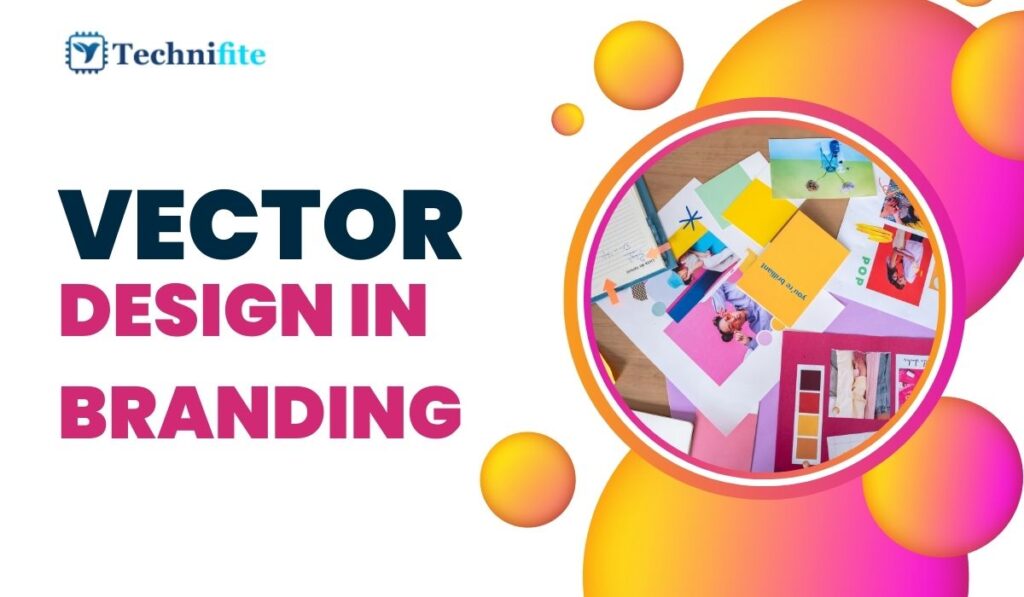Vector Design in Branding: In the digital age, where attention spans are short and visual communication is paramount, a brand’s logo and icons play a pivotal role in shaping its identity. Memorable logos and icons are the face of a brand, instantly recognizable and leaving a lasting impression on consumers. In this comprehensive exploration, we delve into the world of vector design in branding, uncovering the significance of vector graphics and the artistry behind crafting logos and icons that stand the test of time.
Understanding the Power of Vector Graphics
The power of vector graphics lies at the heart of effective logo and icon design. Unlike raster images, which are composed of pixels and lose quality when resized, vector graphics are created using mathematical equations, allowing infinite scalability without compromising sharpness or clarity. This scalability is especially crucial in branding, where logos and icons must maintain their integrity across various platforms and sizes, from billboards to mobile screens.
Vector graphics are versatile and flexible, enabling designers to experiment with shapes, lines, and colours effortlessly. With vector design, creativity knows no bounds, and intricate, detailed designs can be achieved with precision. This flexibility ensures that the essence of a brand can be captured in its visual elements, be it a logo for a multinational corporation or an icon for a mobile app.
The Art of Crafting Memorable Logos
1. Simplicity and Memorability
Simplicity is the cornerstone of a memorable logo. A simple design is easy to recognize and recall, making it more likely to leave a lasting impression. Many iconic logos, such as Apple’s or Nike’s swoosh, are elegant yet powerful. Vector design allows for creating clean, uncomplicated shapes, ensuring that logos are instantly recognizable even in the most cluttered of visual landscapes.
2. Unique Conceptualization
A successful logo encapsulates the essence of a brand’s identity, values, and offerings. Through thoughtful conceptualization, designers can translate abstract brand attributes into visual symbols. For example, the arrow in Amazon’s logo not only represents a smile but also conveys the idea of the company’s wide selection, from A to Z. Vector graphics facilitate the exploration of unique concepts, enabling designers to experiment with various elements until the perfect representation of the brand emerges.
3. Versatility and Adaptability
A well-designed logo must be versatile, seamlessly adapting to different contexts and backgrounds. Whether in black and white or vibrant colour, a logo should maintain its integrity on a business card or a website. Vector graphics allow for easy colour variations, resizing, and adaptation, ensuring the logo looks equally impressive. This adaptability is essential in the diverse and ever-changing landscape of modern media.
4. Timelessness and Longevity
A timeless logo transcends trends and fads, remaining relevant and impactful for years if not decades. Vector design enables designers to create enduring logos by focusing on classic elements that withstand the test of time. Avoiding overly intricate details and complex textures ensures the logo remains crisp and clear, regardless of the era. Timeless logos evoke a sense of trust and stability, crucial elements in building a strong brand image.
The Intricacies of Iconography in Branding
While logos represent the brand, icons are visual cues for specific actions, products, or services within digital interfaces. Icons are pervasive in the digital realm, guiding users, enhancing user experience, and contributing to the overall aesthetics of a brand’s online presence.
1. Clarity and Intuitiveness
In the realm of icons, clarity and intuitiveness are paramount. An effective icon communicates its purpose instantaneously without the need for textual explanations. Vector design allows for the creation of easily recognizable symbols, enhancing the user’s understanding of various functions within an application or website. For example, a magnifying glass icon universally signifies search, while a trash bin icon indicates deletion or removal.
2. Consistency in Design Language
Consistency in icon design is crucial for a seamless user experience. Icons within the same interface or brand should adhere to a consistent design language, ensuring harmony and cohesion. Vector graphics enable designers to maintain consistency in shape, style, and colour palette, resulting in a unified visual language across all icons. This uniformity enhances the overall aesthetic appeal and usability of the digital platform.
3. Scalability and Responsiveness
In the era of responsive design, icons must be scalable and adaptable to various screen sizes and resolutions. Vector icons, created with mathematical precision, maintain their sharpness and clarity regardless of the device or screen resolution. This scalability ensures that icons appear crisp and well-defined, whether viewed on a smartphone, tablet, or desktop, enhancing the user’s visual experience.
4. Creativity in Symbolism
While some icons represent universal concepts, others require creative symbolism tailored to specific contexts. For instance, a camera icon in a photography app might incorporate a lens or aperture element to convey its function. Vector design empowers designers to infuse creativity into iconography, allowing for unique and innovative representations of various functions and features. Creative icons enhance usability and contribute to the brand’s personality and identity.
The Role of Color Psychology in Vector Design
Colour psychology plays a pivotal role in both logo design and iconography. Colours evoke emotions, convey messages, and influence perceptions, making them powerful tools in branding. Vector design allows for precise control over colour choices, enabling designers to harness the psychological impact of colours effectively.
1. Establishing Brand Identity
Colours are integral to brand identity, and consistency in colour usage strengthens brand recognition. Through vector design, brands can establish a distinct colour palette that reflects their personality, values, and target audience. For example, warm colours like red and orange evoke energy and passion, while cool colours like blue and green convey calmness and reliability. Consistent colour choices across logos and icons create a cohesive and memorable brand identity.
2. Enhancing User Experience
In iconography, colour plays a functional role in enhancing user experience. Colour-coded icons can provide instant visual cues, guiding users to specific categories or actions. For instance, in a productivity app, green icons might represent completed tasks, while red icons indicate pending tasks. Vector design facilitates the creation of vibrant and visually appealing coloured icons, ensuring that users can quickly interpret and respond to visual cues within digital interfaces.
3. Cultural and Contextual Considerations
Colours hold different meanings and cultural significance in various regions and contexts. A colour that symbolizes positivity in one culture might convey negativity in another. Brands operating globally must consider these cultural nuances when designing logos and icons. Vector design allows for easy experimentation with different colour combinations, enabling designers to adapt colour choices based on cultural considerations and the specific context in which the brand operates.
Conclusion: The Artistry of Vector Design in Branding
In branding, vector design is more than a technical skill; it is an art form that shapes perceptions, conveys messages, and establishes connections. Creating memorable logos and icons demands a delicate balance between creativity, precision, and an in-depth understanding of the brand’s essence. Through the versatility of vector graphics, designers can bring brands to life, ensuring that their visual elements leave an indelible mark on the audience.
As technology advances and design trends evolve, the artistry of vector design continues to redefine the visual landscape of branding, whether crafting a minimalist logo that speaks volumes with its simplicity.
Frequently Asked Questions (FAQs)
What is the significance of vector design in creating logos and icons for branding purposes?
Vector design is crucial in creating logos and icons for branding because it allows for infinite scalability without losing quality. Unlike raster images, vector graphics maintain sharpness and clarity even when resized, ensuring that logos and icons look crisp on various platforms and devices. This scalability is essential for consistent brand representation across digital and print media.
How does vector design contribute to the versatility of logos and icons in branding?
Vector design allows designers to experiment with shapes, lines, and colours seamlessly. It allows for creating clean, uncomplicated shapes, ensuring that logos remain recognizable and memorable. Additionally, vector graphics enable the precise control of colour choices, enhancing the versatility of icons and ensuring they can be adapted to different contexts, platforms, and cultural preferences.
Can vector-designed logos and icons be easily customized or adapted for different marketing materials?
One of the significant advantages of vector-designed logos and icons is their adaptability. Designers can easily customize vector graphics to suit marketing materials, such as business cards, websites, billboards, and merchandise. Vector graphics can be resized, recoloured, and modified without losing quality, making consistent branding materials effortless across a wide range of media.
How do vector-designed icons enhance user experience in digital interfaces?
Vector-designed icons enhance user experience by providing clear and intuitive visual cues. They are easily recognizable and convey functions or actions instantly, aiding users in navigation and interaction within digital interfaces. Vector icons can be scaled perfectly, ensuring they appear sharp and well-defined on different screen sizes, contributing to a seamless and visually appealing user experience.
What role does colour psychology play in vector design for branding, especially concerning logos and icons?
Colour psychology is essential in vector design for branding, as colours evoke specific emotions and perceptions. Consistent colour choices across logos and icons establish a brand’s identity and influence how the audience perceives it. Colour-coded icons enhance usability by providing instant visual cues, guiding users effectively. Vector design allows designers to experiment with various colour combinations, enabling them to create visually appealing and culturally appropriate branding materials.


